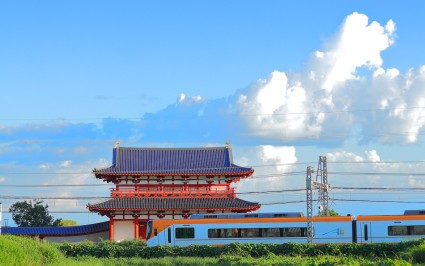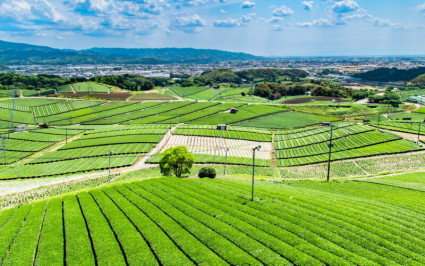Amelia Earhart broke a transcontinental speed record 90 years ago, in July 1933, by flying her signature red Lockheed Vega from Los Angeles to New Jersey in just 17 hours, seven and a half minutes. Earlier that year, Earhart had flown as an observer on a Northwest Airways winter flight across the U.S., testing the possibilities of a “Northern Transcontinental” route.
Because those early airplanes couldn’t reach high altitudes, they weaved through dangerous peaks and the erratic weather patterns that mountain ranges helped create. One co-pilot remembers the journey as “seat-of-the-pants flying across the Dakota and Montana plains and through, over and around the Western mountain ranges.”
How does air travel today compare?
I’ve studied airplane technology, airport design and cultural attitudes toward air travel, and I’ve noticed how aspects of flying seem to have calcified over time.
Long-distance flight advanced rapidly between the 1930s and the early 1960s, shaving off the number of hours in the sky by half. But over the past 60 years, the duration of such flights has remained roughly the same. Meanwhile, the ecosystem of air travel has grown more elaborate, often leaving passengers squirming in their seats on the tarmac before or after flight.
Coast-to-coast air travel is in a rut – but there are still efforts to improve this mode of transit.
Just another ordinary miracle
Transcontinental air journeys are clearly different 90 years after Earhart’s record-breaking exploratory flights: Travelers now take such trips for granted, and often find them to be pure drudgery.
In 2018, travel blogger Ravi Ghelani reviewed in minute detail a United Airlines flight from Newark, New Jersey, to Seattle – roughly the same northern route that Earhart explored in 1933.
But for Ghelani, seated in first class, it wasn’t the terrain or frigid temperatures that were the most cumbersome part of his adventure. It was a cheap complimentary blanket, which “barely qualified as one – it was very thin, very scratchy.”
The dreaded blanket reappears in Ghelani’s summary of his trip: “My main qualm with this flight was the lack of a decent blanket – the tiny, scratchy blanket that was provided wasn’t cutting it for the six-hour flight.”
I can imagine Earhart rolling in her watery grave: “You zip across the continent in six hours and you complain about a scratchy blanket?”
Yet Ghelani’s account of a mundane cross-country flight reveals a truth: Commercial air travel just isn’t the adventure it was back in Earhart’s time.
As one captain of a major U.S. airline who regularly flies long routes told me, “Today jetliners fly across the country from Los Angeles to New York, or Boston to Seattle, full of passengers oblivious to the commonplace practice it has become.”
This pilot compared coast-to-coast flights to “iPhones, microwaves or automobiles” – just one more ordinary miracle of modern life.
Little indignities multiply
The high-risk adventure of air travel has been subdued, yet long flights today can paradoxically feel torturous.
As philosopher Michael Marder puts it in his 2022 book “Philosophy for Passengers”: “When crew members wish passengers a ‘pleasant journey,’ I hear a dash of cruel irony in their words. How pleasant can the passenger experience be when you are crammed in your seat, with little fresh air, too hot or miserably cold, and sleep deprived?”
I asked my colleague and frequent flier Ian Bogost about his experience of coast-to-coast trips, and his reply was illuminating: “The same trip seems to get longer every year, and less comfortable. There are reasons – consolidation, reduced routes, pilot and air-traffic labor shortages, decaying technical infrastructure – but it still feels like moving backwards.” In spite of widespread attempts to update aircraft and modernize terminals, the vast system of air travel can seem cumbersome and outdated.
Recently at The Atlantic, reporter Amanda Mull wrote about the biometric screening company Clear, describing this firm’s high-tech service to skip the ubiquitous toil of identity checks before flight, at the cost of surrendering some privacy and personal information. Mull concludes the reason more travelers will likely enroll in this service is that “traversing American airport security is simply that grim.”
For Mull, the adventure of contemporary air travel isn’t the destination, or even the journey itself – it’s what you must do to get through the airport.
Still, it’s worth noting that the majority of the human population has never boarded an airplane; flying cross-country remains a relatively exclusive experience. For most people, the closest they’ll get to a coast-to-coast flight is seeing a small white scratch across the sky, as another airliner makes its arc at 35,000 feet.
2 futures of cross-country flight
Coast-to-coast travel is no longer about breakneck speed or defying elemental odds, and Earhart’s quests to push the limits of aviation couldn’t be further from the bland routines of contemporary air travel. Nor does it involve people dressing to the hilt to step aboard a jetliner for the first time, with passengers stowing their fancy hats in spacious overhead bins.
Where are the new frontiers for transcontinental flight today?
One area of innovation is in a greener form of flight. Solar Impulse, a completely solar-powered plane, took two months to fly coast-to-coast in 2013. It averages a plodding 45 mph at cruising altitude. As The Associated Press reported: “Solar Impulse’s creators view themselves as green pioneers – promoting lighter materials, solar-powered batteries, and conservation as sexy and adventurous. Theirs is the high-flying equivalent of the Tesla electric sports car.” Solar Impulse was more recently reconfigured as a remotely piloted aircraft, with new experiments in long-distance solar flight underway.
The comparison of Solar Impulse to a Tesla is handy because a different extreme can be found in Elon Musk’s company SpaceX. As part of the relentless development of its biggest vehicle, “Starship,” SpaceX has advertised the possibility of “point-to-point” travel on Earth: for example, flying on a commercial rocket from Los Angeles to New York in 25 minutes. Never mind the physical tolls of a normal 19-hour flight; it’s hard to imagine what such a brief yet fast trip would feel like, not to mention what sort of class divisions and bleak industrial launch sites such jaunts would rely on.
Get there as fast as possible, using as much fuel as necessary; or glide lazily along, powered by the sun, saving the planet. These are two starkly different visions of coast-to-coast flight, one a dystopian nightmare and the other a utopian dream.
In the middle, there’s what most flying mortals do: wait in lines, board unceremoniously and be relieved if you get to your destination without too much discomfort or delay.
Christopher Schaberg is a writer, editor, and scholar of contemporary literature, environmental thought, and the culture of air travel. He is now serving as the Director of the Program in Public Scholarship at Washington University in St. Louis.
The Conversation is an independent and nonprofit source of news, analysis and commentary from academic experts.
© The Conversation














20 Comments
Login to comment
Mocheake
The romance of flying is akin to the romance of marriage. Over time, it fades away and there is very little hope if rekindling it as both parties don't really care enough. There is still love there, though.
Peter Neil
Deregulation killed the experience. Flying used to an event, an experience where people dressed nicely, now it’s all fat, sweaty people in flip flops and tank tops.
People used to be polite to each other, now they’re jerks.
People used to carry a small carry on, and checking a bag was free and easy and quick, now they carry as many bags as they can get away with and have to stand in an hour long line to pay for checking a bag.
Flight attendants were helpful and smiling, now they’re surly and condescending.
Here’s some snacks and a drink with a smile, now pay up and maybe I’ll give you some peanuts.
Passengers had some leg room, now your face is smashed against the seat in front of you.
Here are some earphones, now you have to pay for them.
Smaller airports had flights, every flight has to go through Atlanta where you have to go through the whole ordeal again.
K3PO
There is no hope of recapturing the romance of anything, let alone flying.
As Louis CK said, "...now we live in an amazing, amazing world, and it's wasted on the crappiest generation of just... spoiled idiots..."
Tim Sullivan
First class is still good though.
Peter Neil
Tim SullivanToday 09:28 am JST
True. Once you fly first class, you'd rather poke knitting needles in your eyes than fly economy ever again. ;)
Bill Lewis
I won't be flying again until it becomes as easy as getting on the shinkansen. Walk up to the machine, buy your ticket, get on the train. Airlines and the TSA have made air travel so cumbersome that I won't have any more of it. I didn't leave anything in the US so important that I have to go back for it. I haven't been back to the US in well over 15 years, and I don't have any plans to go there for another 15 years or beyond. If the airlines want my business, do it the way of shinkansens. Otherwise, no thanks.
Mr Kipling
Bill Lewis...
And who do we have to thank for that?
Look, there is a story just today on JT from a Malaysian Airline flight.....
Thunderbird2
I still get a thrill from the moment I arrive at the airport to the moment I exit... to me it's still exciting. The start of a new adventure.
Bloody expensive though, but that's what keeps it special for me... it's a luxury that I allow myself every couple of years
Elvis is here
Maybe. But you are still on the same plane for the same length of time as everyone else
i just completed a round international trip on economy last week. It was ok. The biggest "square cog" is baggage claim at the end. I zipped through immigrate in no time and sat for an hour waiting for my baggage. It takes ages and ages and slows everything up.
fatrainfallingintheforest
That's a shame. Which airport? My family and I had an international round trip last month, including one domestic transfer, and didn't have to wait longer than 10 minutes at any of the three points we had to collect our bags. Our return flight was only a little over half full though, for full disclosure.
Mr. Marder needs to harden up. On my flights the air freshness, temperature and seat sizes were all fine.
cuddly
I came back to Haneda last month on a full flight from SE Asia, sat in biz class, and had a priority tag slapped on my suitcase, and waited for about 30 minutes for luggage.
In June, came to Narita from Hawaii and same gig with the priority tag, and waited one hour for luggage.
Other times this year, I waited no more than a minute or two for luggage at Narita.
fatrainfallingintheforest
cuddly,
Luck of the draw, then. Must depend on time of day, amount of incoming flights and so on, I suppose. Our final airport was Narita, on a Saturday evening, and that was the half full flight as I mentioned. Economy the whole way.
cuddly
I am wondering if the introduction of drug sniffing dogs on the inside, before the luggage is put on the conveyor belt, is the reason.
JeffLee
It was, before the mass-murdering actions of several Middle Eastern gentlemen on Sept. 11, 2001. Then there was the guy with the bomb in his shoes and the other in his underpants.
Before then, I remember being able to fly cheaply with lots of flexibility, like showing up at the airport 40 minutes beforehand for international flights and breezing through the lines. Changing dates was cheap and easy too, and all the free drinks you could handle in economy.
Thanks, guys.
fatrainfallingintheforest
Possibly. Or it's a timing thing. If you flew business, you would have gotten off the plane first and therefore arrived at baggage claim much quicker than the cattle in back.
La vie douce
Possibly. Or it's a timing thing. If you flew business, you would have gotten off the plane first and therefore arrived at baggage claim much quicker than the cattle in back.
Thats a good point.
Elvis is here
Haneda
cuddly
I'm always one of the first to the baggage carousel. I use the automated gate.
It seems the spacing between the luggage is much more than before too.
Maybe with new marijuana laws in the US and Thailand Japan is heightening their search efforts for these drugs.
fatrainfallingintheforest
Elvis,
Haneda
Thanks. Haven't used it for a very long time. Will try to avoid it.
Mr Kipling
JeffLee..
15 from Saudi Arabia, 2 from Egypt, 2 from the UAE and one Lebanese. Funding came , unknowingly, from the Saudis and UAE. No Iraqis, Afghanis or Syrians were involved....